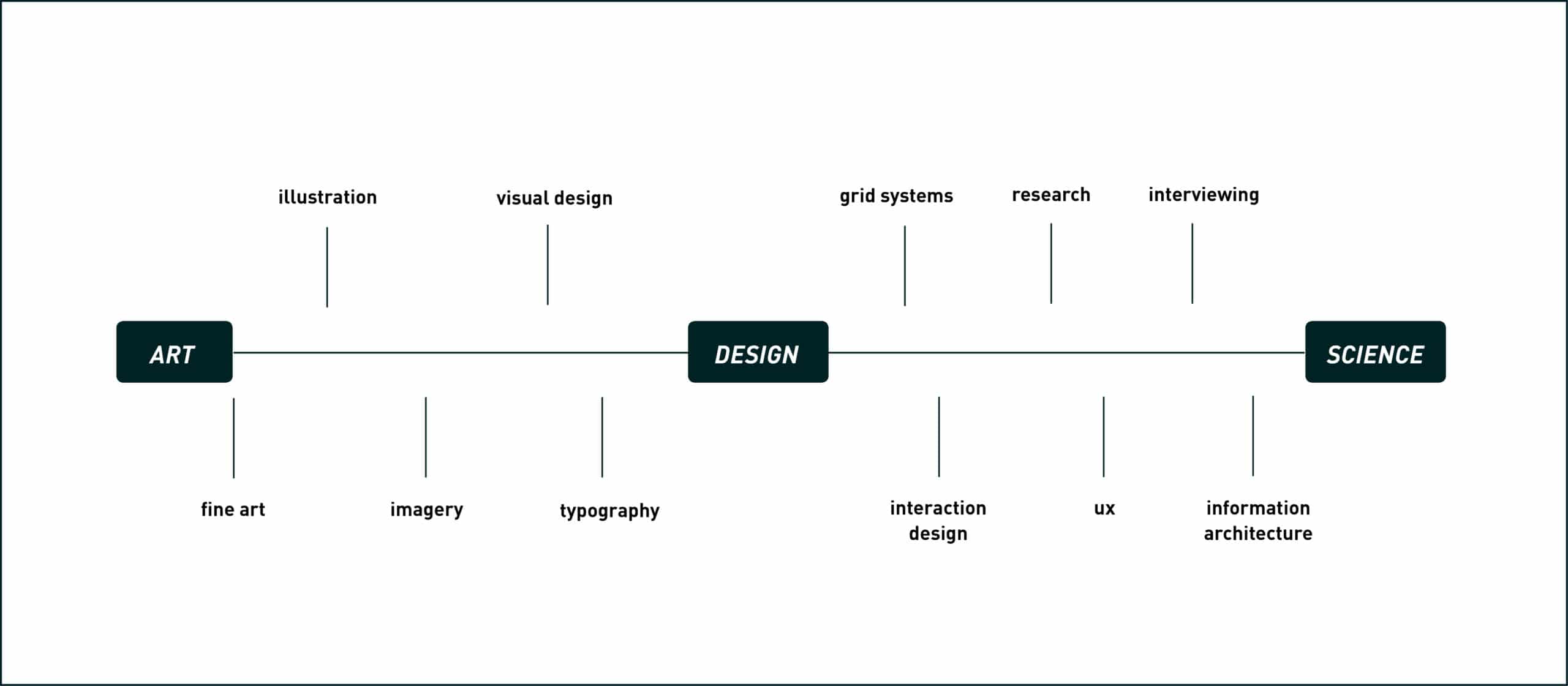Does design have a seat at the table?
Academic professions such as law, medicine, business, and education have formal levels of training that are usually equated with an individual’s level of certification. These milestones are usually required to move forward in that career.
For the profession of digital design, this is less so. The fields I’m referring to cover user experience and product design.
Hierarchies in Education
Let’s look at medicine. There is a very clear hierarchy. Aspiring physicians attend undergraduate school for four years, then, if they score high enough on their MCAT to be competitive, candidates apply to medical school. If accepted to medical school students work rigorously for four more years — two years academic and two years clinical. All the while students take exams and multiple rounds of licensing tests. During this schooling, medical students shadow and receive direct education from superiors. From the top to the bottom, their is a hierarchy — Attending Physician, Resident, Interns, and at the bottom of the barrel, the Medical Student.
To be clear, this article isn’t about comparing medicine or law or business to design. I don’t think that design is directly comparable to any of these fields. However, there is a missing link in the field of design that hurts the credibility of the profession as a whole.
Because design lives at the intersection of science and art, there must be more guided training and mentorship a product designer can receive. More mentorship from more studios, agencies and consultancies will help in raising the bar for the profession as a whole.
The Most Valuable Experience Is Gained After Graduation
Undergraduate training can begin to set a foundation in design basics such as typography, design history, composition, and color theory, just as an undergraduate going on to medical school would focus on chemistry, anatomy, biology and physics during college. Then, with this core knowledge, on-the-job apprenticeships can give designers the opportunity to start practicing their skills with more experienced professionals. The actual practice of our craft is how we learn, not the instruction.
All too often, we complain about graduates not having enough experience, but we’re not willing to give them the training they need. With the increasing demand for product and user experience design (especially for tablet and mobile) there will be more students without the needed training to succeed straight out of the gate. And I say, that’s okay.
We should start to consider post-undergraduate training for designers as similar to the clinical years of medical school for a med student or student teaching for educators. If we don’t train young designers to become great at their craft, we limit the design profession as a whole.
Taking Responsibility
Many of the top design consultancies in the country already do this by offering paid internships or long-term guided apprenticeships. But what about the rest of us? Hiring apprentices is something that professional designers from all disciplines can start to do, and this can impact the profession as a whole.
If we continue to look only for “talent” and are not willing to train our cohorts, there will be a continued misconception that design is only about talent and vision (the artistic side of design), and less about research, principles and detailed planning (the scientific side of design). The misconception that design is mostly about instinct and personal taste not only puts the designer on a pedestal, it limits design as a field, a field that can be vital to the success of the product.
Giving novice designers training by creating apprenticeship programs that include curriculum — such as required reading, mentorship, client project shadowing, and bootcamp assignments — requires hard work, time, and money. This seems like a small price to pay if this approach could start to elevate the profession of digital design to stand with other academic professions.
The next question is, what happens after the apprenticeship?



I agree wholeheartedly. I often feel like many older designers (and those in charge of hiring) expect younger ones to know how to do everything as soon as they get out of school. It’s like they forgot how they learned to do real-world work.
Much of being a designer — especially a UX designer — involves learning from others in ways that aren’t currently possible in our schooling system. It’s impossible to know everything without help from others, especially when there are so many possible techniques to learn. A senior designer at my second job out of college invested in a building a reading library for our fledgling team, sending us to conferences, and reserving time each week for us to share techniques. More people need to invest in those who have potential to be great.